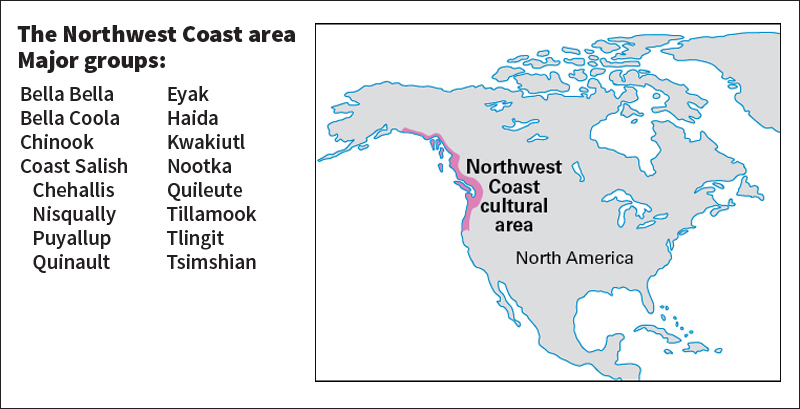Tsimshian << TSIHM shee uhn >> once ranked among the wealthiest First Nations (Native Americans) groups in North America. Their homeland lies in British Columbia in Canada, chiefly along and between the Nass and Skeena rivers and on islands in the Pacific Ocean near the rivers’ mouths. The Tsimshian became known for their graceful oceangoing canoes and well-crafted totem poles, masks, and carved wooden boxes.

In their traditional way of life, the Tsimshian lived in groups of families related through the women. These groups lived in large plank houses built along rivers and beaches. Family groups placed totem poles in front of their homes and elsewhere to signify the group’s social rank and ancestry. A vast supply of timber, plant life, and fish and other game in their homeland helped the Tsimshian become wealthy. Some families owned slaves. Most slaves were enemies captured during wartime or were the descendants of such enemies.
The Tsimshian still hold elaborate feasts called potlatches to mark marriages, deaths, or other notable occasions. Potlatches are also used to establish social rank and gain prestige. Hosts achieve these goals by displaying possessions, giving them away, or occasionally destroying them.
Many Tsimshian increased their wealth during the late 1700’s and early 1800’s, after sea merchants from Europe and the United States began to sail to the northwest coast of North America. They traded furs for metal tools, textiles, and other manufactured goods.
Today, there are several thousand Tsimshian. Most live in or near their traditional homeland and work in fishing, mining, and timber industries.
